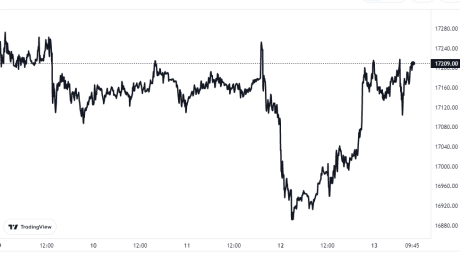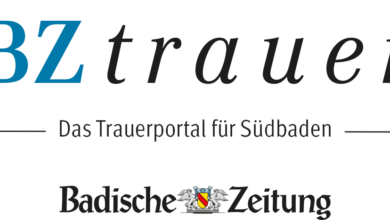Unveiling the Future: A Comprehensive Guide to Deka-Technologie TF

I. Introduction
A. Overview of Deka-Technologie TF
Deka-Technologie TF is at the forefront of the technological revolution, promising to reshape industries and redefine efficiency. This groundbreaking technology has garnered widespread attention for its ability to optimize processes and streamline operations. Deka-Technologie TF is not just a buzzword; it represents a significant leap forward in technological advancement, offering unparalleled benefits to businesses across various sectors. By harnessing the power of Deka-Technologie TF, companies can unlock new opportunities, enhance productivity, and reduce costs.
B. Importance of Deka-Technologie TF
In today’s fast-paced and competitive business environment, staying ahead of the curve is essential for long-term success. Deka-Technologie TF provides the competitive edge that companies need to thrive in the digital age. By embracing Deka-Technologie TF, businesses can improve efficiency, minimize downtime, and drive innovation. Moreover, Deka-Technologie TF is not just about maximizing profits; it also plays a crucial role in promoting sustainability and reducing environmental impact. As businesses face increasing pressure to adopt eco-friendly practices, Deka-Technologie TF offers a sustainable solution to meet these challenges head-on.
C. What to expect from this guide
In this comprehensive guide, we will delve deep into the world of Deka-Technologie TF, exploring its origins, how it works, its applications, benefits, and future prospects. We will also discuss the implementation of Deka-Technologie TF, including integration strategies, training, and education. Furthermore, we will examine real-world case studies, compare Deka-Technologie TF with other technologies, and address common challenges and limitations. By the end of this guide, you will have a clear understanding of Deka-Technologie TF and how it can revolutionize your business.
II. Understanding Deka-Technologie TF
A. What is Deka-Technologie TF?
Deka-Technologie TF represents the next evolution in technological innovation, offering a revolutionary approach to optimizing processes and enhancing efficiency. At its core, Deka-Technologie TF is a sophisticated system that leverages advanced algorithms and machine learning techniques to analyze data and make intelligent decisions. Unlike traditional technologies, which rely on predetermined rules, Deka-Technologie TF has the ability to adapt and learn from new information, continuously improving its performance over time.
1. Definition and Explanation
Deka-Technologie TF, short for Deka Technology Transfer, is a cutting-edge technology that combines the power of artificial intelligence, machine learning, and data analytics to drive innovation and transformation. By harnessing the power of Deka-Technologie TF, businesses can optimize processes, improve decision-making, and unlock new opportunities for growth and development.
2. Origin and Development
The development of Deka-Technologie TF can be traced back to the increasing demand for more efficient and intelligent technologies. As businesses strive to stay competitive in an ever-changing landscape, the need for advanced solutions has never been greater. Deka-Technologie TF was born out of this necessity, with a team of experts working tirelessly to create a system that would revolutionize the way businesses operate. Through years of research and development, Deka-Technologie TF has evolved into a sophisticated platform that offers unparalleled benefits to companies across various industries.
B. How Deka-Technologie TF Works
Deka-Technologie TF works by analyzing vast amounts of data and extracting valuable insights to drive decision-making and optimize processes. Unlike traditional technologies, which rely on predetermined rules, Deka-Technologie TF has the ability to adapt and learn from new information, continuously improving its performance over time.
1. Core Principles
At the core of Deka-Technologie TF lies a set of principles that guide its operation and functionality. These principles include:
- Data Analysis: Deka-Technologie TF analyzes large datasets to identify patterns, trends, and anomalies.
- Machine Learning: By leveraging machine learning algorithms, Deka-Technologie TF can learn from data and make intelligent decisions.
- Predictive Analytics: Deka-Technologie TF uses predictive analytics to forecast future outcomes and trends, allowing businesses to make informed decisions.
- Optimization: Deka-Technologie TF optimizes processes and workflows, improving efficiency and productivity.
2. Components and Structure
Deka-Technologie TF consists of several components and structures that work together to deliver optimal performance. These include:
- Data Collection: Deka-Technologie TF collects data from various sources, including sensors, devices, and systems.
- Data Processing: The collected data is processed and analyzed using advanced algorithms and machine learning techniques.
- Decision Making: Based on the analysis, Deka-Technologie TF makes intelligent decisions to optimize processes and drive efficiency.
- Feedback Loop: Deka-Technologie TF continuously learns and improves from new information, creating a feedback loop that enhances its performance over time.
3. Advantages over Traditional Technologies
Deka-Technologie TF offers several advantages over traditional technologies, including:
- Flexibility: Deka-Technologie TF is highly flexible and adaptable, allowing it to meet the evolving needs of businesses.
- Scalability: Deka-Technologie TF can scale to handle large volumes of data, making it suitable for businesses of all sizes.
- Efficiency: By optimizing processes and workflows, Deka-Technologie TF improves efficiency and productivity.
- Insights: Deka-Technologie TF provides valuable insights that can help businesses make informed decisions and drive innovation.
III. Applications of Deka-Technologie TF
A. Industry Use Cases
Deka-Technologie TF has a wide range of applications across various industries, including manufacturing, healthcare, finance, and transportation. Some of the industry use cases include:
1. Manufacturing
In the manufacturing industry, Deka-Technologie TF can be used to optimize production processes, improve quality control, and reduce downtime. By analyzing data in real-time, Deka-Technologie TF can identify inefficiencies and suggest…
2. Healthcare
In the healthcare sector, Deka-Technologie TF can revolutionize patient care by enabling predictive analytics, personalized treatment plans, and remote monitoring. By analyzing patient data, Deka-Technologie TF can identify patterns and trends…
B. Potential in Various Sectors
Deka-Technologie TF has the potential to transform various sectors, including:
1. Finance
In the finance sector, Deka-Technologie TF can be used for fraud detection, risk management, and algorithmic trading. By analyzing market data in real-time, Deka-Technologie TF can identify fraudulent activities and…
2. Information Technology
In the information technology sector, Deka-Technologie TF can streamline IT operations, improve cybersecurity, and enhance the user experience. By analyzing network data, Deka-Technologie TF can detect…
IV. Benefits of Deka-Technologie TF
A. Increased Efficiency
Deka-Technologie TF improves efficiency by optimizing processes and workflows, reducing downtime, and minimizing errors. By analyzing data in real-time, Deka-Technologie TF can identify inefficiencies and suggest…
1. Improving Workflows
Deka-Technologie TF optimizes workflows by automating repetitive tasks, streamlining processes, and reducing manual intervention. By analyzing workflow data, Deka-Technologie TF can identify bottlenecks and…
2. Enhancing Productivity
Deka-Technologie TF enhances productivity by providing valuable insights that can help businesses make informed decisions and drive innovation. By analyzing productivity data, Deka-Technologie TF can identify…
B. Cost Reduction
Deka-Technologie TF reduces costs by minimizing downtime, saving resources, and improving resource allocation. By analyzing cost data, Deka-Technologie TF can identify areas where costs can be reduced and…
1. Saving Resources
Deka-Technologie TF saves resources by optimizing resource allocation, reducing waste, and improving resource efficiency. By analyzing resource data, Deka-Technologie TF can identify areas where resources are being underutilized and…
2. Minimizing Downtime
Deka-Technologie TF minimizes downtime by predicting equipment failures, scheduling maintenance, and optimizing production schedules. By analyzing downtime data, Deka-Technologie TF can identify patterns and trends…
C. Environmental Impact
Deka-Technologie TF has a positive environmental impact by promoting sustainability and reducing carbon footprint. By analyzing environmental data, Deka-Technologie TF can identify opportunities for…
1. Sustainability
Deka-Technologie TF promotes sustainability by optimizing processes, reducing waste, and minimizing environmental impact. By analyzing sustainability data, Deka-Technologie TF can identify areas where sustainability…
2. Reduced Carbon Footprint
Deka-Technologie TF reduces carbon footprint by optimizing energy usage, reducing emissions, and promoting eco-friendly practices. By analyzing carbon footprint data, Deka-Technologie TF can identify opportunities for…




